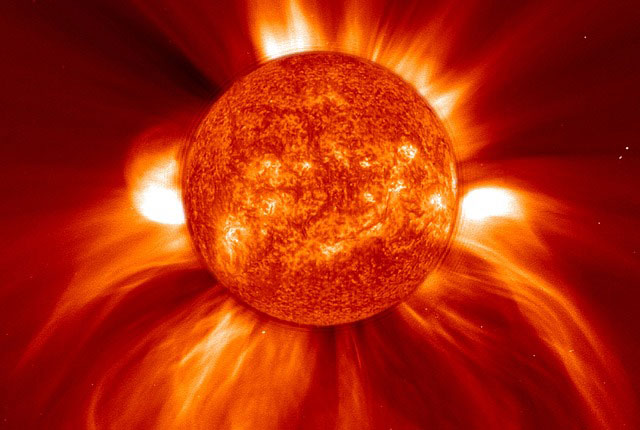
Researchers have been struggling to generate nuclear fusion energy for some time now. And the motivation behind it is clear. We’re getting deeper in trouble as global warming and climate change worsens, and the best solution we could hope for is an alternative source of energy: clean, sustainable, safe, and practical, of course. We can’t very well expect a replacement for coal-based power that only a few will be able to afford, right?
Nuclear fusion is the process by which hydrogen atoms fuse together to create helium in a plasma and generate tremendous amounts of energy. It’s the complete opposite of nuclear fission which involves splitting, rather than combining of atoms.
Nuclear fusion is what powers our sun and all other stars. And the energy it produces is way much more than what nuclear fission can produce. It’s what we need to avert a potential global catastrophe. And if we intensify our efforts, it might be within our reach by 2030. At least that’s what Earl Marmar, head of MIT’s Alcator C-Mod fusion project, believes.
Right now, nuclear fusion experiments are being done in what are referred to as tokamaks which are basically vacuum chambers shaped like a donut, with electromagnets on its edges. As gas is pumped into the chamber, electricity is used to charge it and turn it into plasma, which is then kept within the chamber by the magnetic fields. When the required pressure and temperature of the plasma is reached, fusion takes place.
There’s no doubt that the process works. But there are several hurdles that are making it impractical.
For starters, the process has to take place in an environment with extremely high pressure and temperature, pretty much like what the sun’s core is like. Creating and sustaining that kind of environment requires an immense amount of energy. Which brings us to the next obstacle — researchers have yet to figure out how to create more energy than what’s needed to generate that amount of energy.
According to Marmar, there are a number of feasible technological solutions; we just have to be more invested in finding them. He also says the main goal would be to reduce the size of the reactors so they’ll be more cost-effective to build and operate.
For his team at MIT, their focus is on strengthening the force of the magnetic field by using ‘high temperature superconductive magnets’. Compared with the typical electromagnets used on tokamaks which require temperatures of about -239 degrees Celsius to work, high temperature superconductive magnets can work at relatively higher temperatures. This means the magnetic fields generated won’t just be stronger, the energy required will be much lower too. So if the energy input is lowered, that could also translate to a higher energy output. Which is exactly what’s needed for nuclear fusion to become viable.
As Marmar explained to Inverse: “We think that opens a new pathway for more efficient utilization of the magnetic field, which could be a faster and more economical way to get fusion energy actually on the grid.”
While Marmar admits we still have a long way to go, he also asserts that, “With a sufficiently aggressive program, and I think 2030 might be too aggressive, but I think close to that.”
We hope he turns out to be right.
- Bulenox: Get 45% to 91% OFF ... Use Discount Code: UNO
- Risk Our Money Not Yours | Get 50% to 90% OFF ... Use Discount Code: MMBVBKSM
Disclaimer: This page contains affiliate links. If you choose to make a purchase after clicking a link, we may receive a commission at no additional cost to you. Thank you for your support!

The statement about extremely high pressure is required is incorrect; the pressure in a power Tokamak might be about 200 psi. Conventional proposed fusion reactions are not practical for a number of reasons. The proposed fuels, typically Deuterium/Tritium produce energy in the form of 14MeV neutrons, which are next to impossible to deal with. To justify plasma fusion power expenditures because of global warming is poor logic.
Fusion – the power of the future, and has been for 50 years